What is Ski Touring?
Introduction to Ski Touring
A wild and free way to glide across snowy landscapes, ski touring is essentially a means of getting to a place where no other form of transport can.
With special ‘skins’ stuck to the base of your skis which have ski touring bindings, you can slide uphill and grip the snow to ascend a slope, before peeling off the skins and packing them away, to ski to your snowy destination.
The oldest form of skiing, it derives from snowy lands and has evolved to become a sport which allows you to access backcountry ski areas, whilst getting some exercise.
A brief history of Ski Touring
Hundreds (if not thousands) of years ago, if you lived in a wintry environment, then sticking strips of seal skin onto your skis was the only way to get around effectively without sinking into the deep powder.
As well as being an efficient way to pop round to Auntie Astrid’s to tuck into her delicious rakfisk, it was also ideal for quietly sneaking up on your prey when out hunting. There are accounts of skiing being used as part of military activity, dating back several centuries.
As is often the case with sports, military necessity developed into a leisure activity, and in the first half of the 20th century, recreational skiing took off in a big way, with skiers still using animal skins to ascend slopes before the advent of the drag lift.
The history of Courchevel and Meribel’s ski tourism dates back to the post World War development of skiing and our early visitors would have used skins to explore the slopes prior to the lifts being installed.
What is Ski Touring?
Is Ski Touring the same as Backcountry Skiing or Freeride? And what is ‘Skinning’ and Splitboarding? Are they the same as cross country skiing?
Ski touring has developed into a way to get exercise and/or to access parts of the mountain that the ski lifts don’t get to. In the US therefore, ski touring is called ‘backcountry skiing’ and you will also hear off piste skiing called ‘Freeride’.
If someone wants to access a freeride or backcountry area and there are no lifts, then they will have to go ski touring (skiing uphill with skins on) to get to these areas.
That’s why you might also hear people talking about going ‘skinning’. This is the same as ski touring: they’ll be attaching skins (synthetic ones!) to their skis and walking up a mountain.
In French, ski touring is ‘ski de randonnée’.
Cross country skiing is NOT the same as ski touring. Cross country skis and boots are completely different and there are no skins required for cross country skiing.
What is a Splitboard?
Splitboarding is basically ski touring, but for snowboarders.
The specially designed board splits in half long-ways, into two ‘skis’ to which you attach the skis for walking and move the bindings into a forward position. Then when you’re ready to head down the slope, you pack away the skins, attach the two halves together, put the bindings back into your snowboarding position and off you go!
Whatever you want to call it, the sport involves attaching skins to their skis and walking up a snowy slope. Sometimes people choose to do this purely for exercise, using very lightweight skis and boots and going as fast as they can, often sticking to a designated ski slope or track.
Other people use wider skis (and therefore wider skins) to ski tour up a slope in order to access an off-piste area, for the pleasure of skiing down in powder.
What equipment do I need for Ski Touring?
- Skis fitted with ski touring bindings
- Skins which are the correct width for the skis.
- Ski boots: these don’t necessarily have to be especially for ski touring, but they must fit the bindings.
There are two types of bindings: frame bindings which would usually fit a ‘normal’ or downhill ski boot, but allow the heel to be freed from the ski, and pin bindings in which a metal pin clicks into a hole on either side of the toe end of a special pin system ski boot.
Can I try ski touring in the Three Valleys?
Yes, you can go ski touring in the Three Valleys.
To give ski touring a try here in the Three Valleys, France, there are some designated spots in the ski area that are set aside for ski touring. One of the best spots is Courchevel’s ‘Freeride Lab’, accessible from Marmottes, Saulire or Pas du Lac lifts. There’s an uphill slope for skinning up, and then you can access the off-piste sections to ride the powder! There are two ex-piste sections – a red and a black – which are good places to start.
We recommend that to give ski touring a try, you go with a ski instructor or mountain guide, who will help you with the equipment and take you to safe areas for your level. There are plenty of excellent guides and off piste instructors who will be able to help you get kitted up and on the slopes to try ski touring. You can book a lesson for half a day, or a full day, or even for a whole week.
Can I rent ski touring equipment in the Three Valleys?
To rent ski touring equipment, we recommend trying Camp de Base in Courchevel 1850 in Le Forum.
In Meribel, try Sport 2000 or La Varappe in Meribel Centre.
Physical and Mental Health Benefits of Ski Touring
The fresh air, exhilaration and sense of achievement you get when ski touring means that it’s an excellent way to improve mental health and physical fitness.
Walking uphill with the skins on requires effort, depending on the incline of the slope, so your heart rate raises accordingly. Being at altitude also increases the exertion so your body will be working quite hard – probably more than normal running, even though the pace is slower.
Seeing the mountains at this slower pace is all part of the experience – you really feel that you’re seeing nature up close as well as getting the huge panoramas of snowy white peaks once you’re at the top!
Exercising in this stunning outdoor environment is a huge boost for mental health.
Risks of Ski Touring: Safety and Preparation
Just like with alpine or downhill skiing, ski touring requires some knowledge and preparation to ensure your experience is enjoyable and to avoid injury.
Plan your trip carefully and take into consideration the weather conditions, the routes and the timings.
If you are venturing off piste, find out what the avalanche risk is by getting expert advice from professionals in resort. The ski patrol in the Three Valleys show daily avalanche risk and can help inform you about the weather and snow conditions.
At Ski Magic we would always recommend that you go ski touring with a ski instructor or mountain guide who knows and understands where to find the best snow and the most suitable routes.
Essential ski touring gear and avalanche safety equipment
Avalanche equipment is considered essential whenever you are heading off piste. Rent or invest in these three pieces of equipment and most important – learn how to use them.
- Avalanche transceiver
- Probe
- Shovel
An avalanche air bag would also be the icing on the cake, to maximise your safety.
It is also imperative that you learn how to use this equipment and practise regularly.
In terms of your own personal gear, wearing a helmet is another non-negotiable item, as are sunglasses which protect your eyes against the glare of the snow.
Although you will probably get hot walking up the hill, it is vital to pack gloves, extra layers and a waterproof/warm jacket for the descent. At higher altitudes and after sweating, your body very quickly cools down – often within a few minutes – and especially when skiing downhill.
We would recommend checking out reliable avalanche safety information such as via Henry’s Avalanche Talk.
Again, we wholeheartedly recommend skiing off piste with an expert local guide/ski instructor. Find one here on our ski schools page.
Weather considerations for ski touring
The weather changes quickly in the mountains, so do ensure that the forecast is suitable for your ski touring adventure.
In warmer temperatures and in the latter half of the ski season, make sure to be ready for an early trip because avalanche risk increases as snow temperatures rise.
Find out the weather forecast for the day at the local lift pass office or resort gondola station, where you can find updated information on expected conditions.
Best place to try Ski Touring in the Three Valleys, France
There are many off piste areas to explore in the Three Valleys, lots of which can be accessed by the lift system.
However, if you have already been bitten by the ski touring bug, or fancy giving it a try to explore further afield, here are the best places to try ski touring in the Three Valleys:
- Want to ski powder? Try the Freeride Lab in Courchevel.
- Want some get the heart pumping? Try the route from Le Praz to Courchevel 1850 for 500 metres altitude gain over 3.2km distance.
- Want to push yourself further? Go from Courchevel 1850 to Col de la Loze for 500 metres altitude gain over 2.5km distance.
- Looking for a real adventure? Put your skis on at the Moraine gondola and reach the Col de Gébroulaz.
- From Val Thorens There are two new tracks : Petite Sud (1.8km) and Grande Sud (2km) from the Balcons area.
- Starting in Reberty, Les Menuires you’ll find A trail of 1.5km
- From Meribel Mottaret try the ROC trail, which is 2km long and starts from the top of Chalets gondola.
- In Courchevel Moriond the ‘Géné’piste’ is a 2.8km from the bottom of Granges drag lift.
Why go Ski Touring in the Three Valleys?
With the special equipment and the avalanche risk with off piste skiing, it can be intimidating to try ski touring but the Three Valleys is a great place to give ‘ski de randonnée’ or ski touring a go.
Not only are there some regulated zones which are especially for ski touring, but we also have lots of experienced mountain guides and instructors who can lead you to some of the best powder and help you get the hang of your technique.
Ski Touring Tips and Techniques
There are some basic techniques for ski touring which will help you enjoy the experience and expend less energy and effort.
Ski Touring Techniques for Beginners
Whilst it might feel slightly unnatural to start with, the technique for ski touring is to glide the ski over the snow rather than lifting it.
If you lift the ski then this will add extra stress to your legs and make you more tired, more quickly.
Keep your legs around hip-distance apart.
On your ‘still’ leg, keep your weight balanced over your foot to ensure the skin grips, and at the same time, glide your moving leg forward, then transfer your weight to this foot whilst gliding the other foot.
Advanced Ski Touring Techniques
Perfecting your kick turns is essential for steeper slopes, which you need to zig-zag on. Transfer the weight to the downhill ski and plant both poles uphill. Lift the uphill ski and swing your ski tip to the direction you want to turn. Place your foot down, pushing down with your heel if you are in deeper snow. Your feet are almost in opposite directions at this point! Next ensure your poles are ready to stablise you, transfer your weight to the uphill ski. Then lift your lower ski, doing a sort of kick behind in order to get your heel away from your body. The tip of this ski then needs to swing higher so that you can bring your foot and ski next to the other.
Choosing the best ski chalet for your ski touring adventure
Whether you are a group of ski touring experts or just fancy taking some time out for half a day to experience some backcountry or freeride skiing in the Three Valleys, you can be sure you’ll find everything you need nearby.
Let us help you get started with your ski touring adventure:
- Professional ski guides and off piste skiing instructors
- Best group chalets in Courchevel or Meribel
- Contact us to ask about ski hire for touring equipment
Image credits: Header: Sasha Matic. Other images: Alex Lange, Hendrik Morkel, Max Fitz. Chalet Chu Lo Dou image: Richard Roberts.
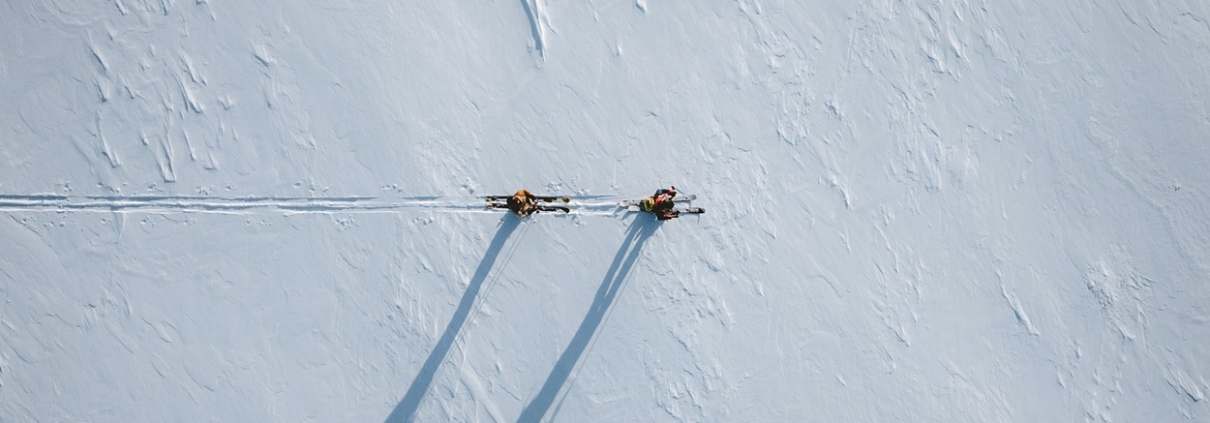
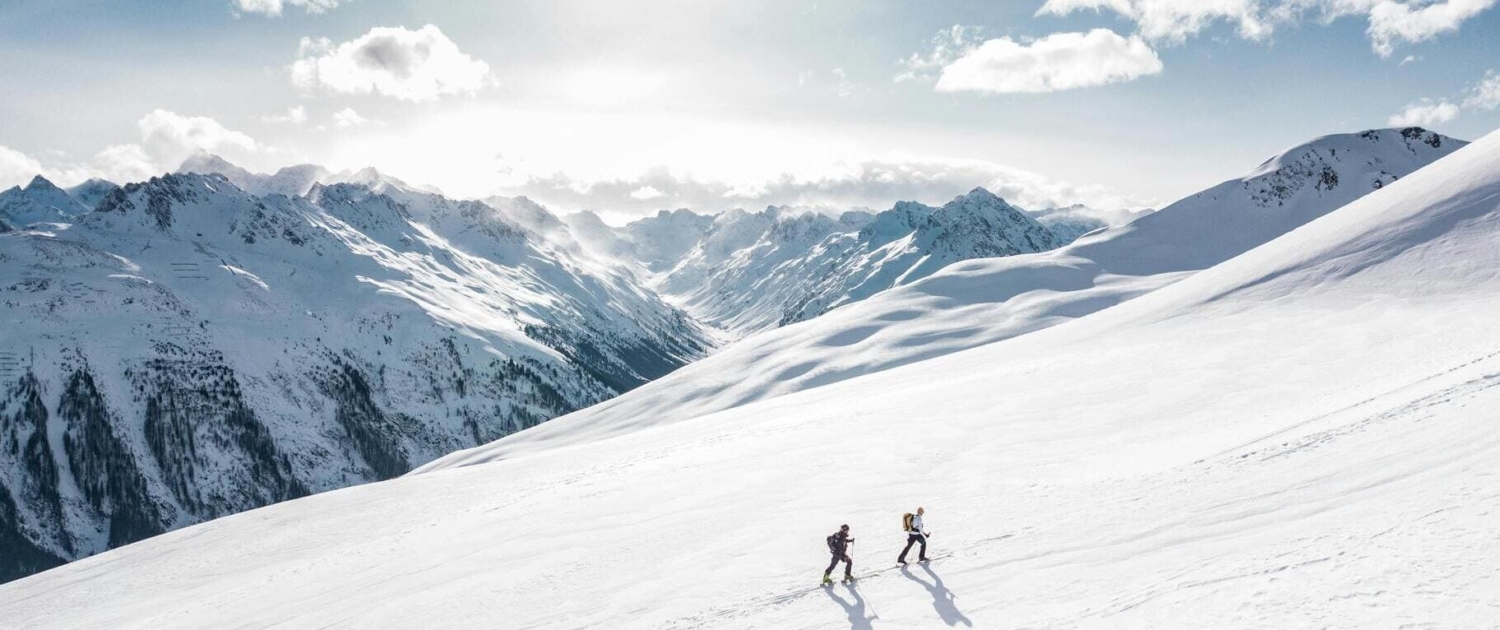
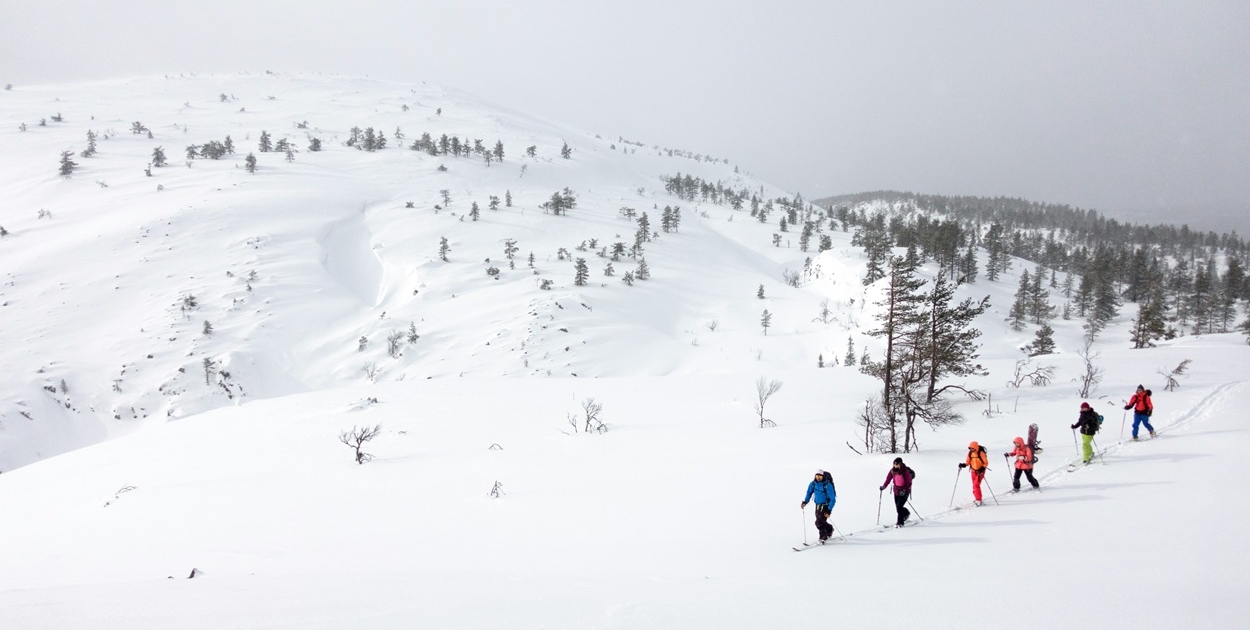
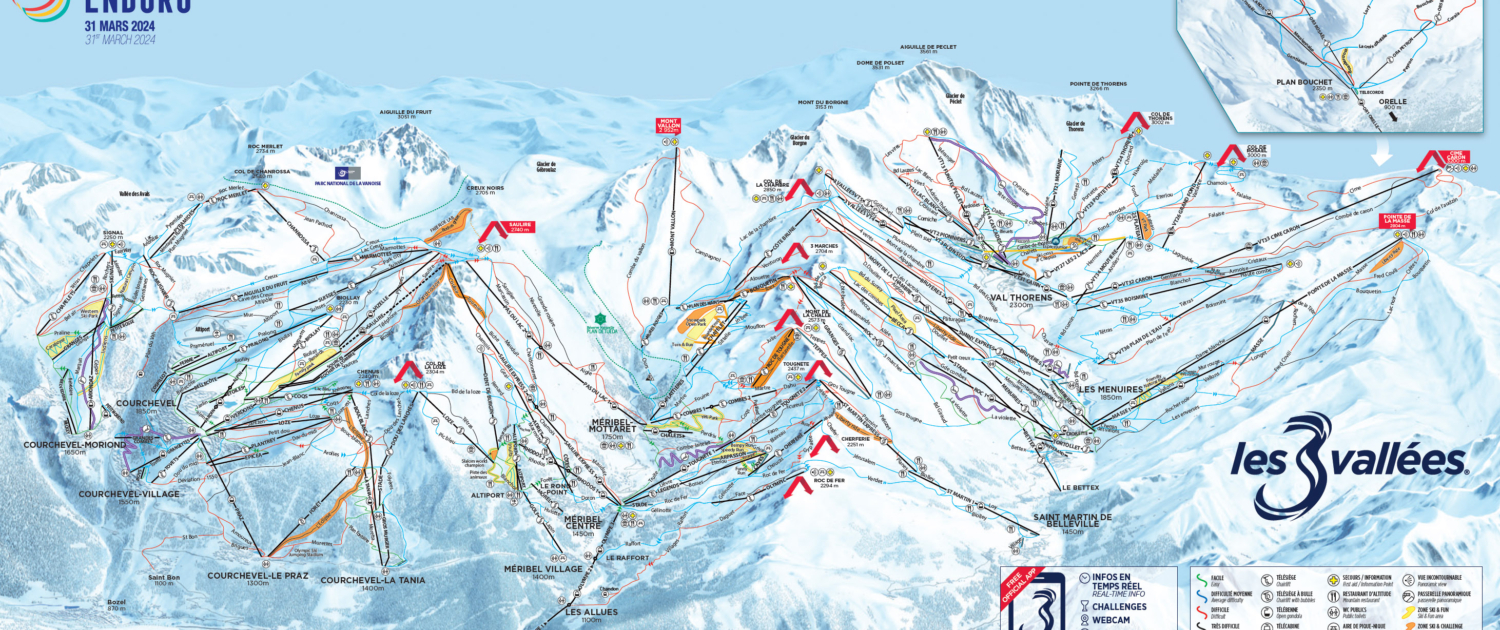
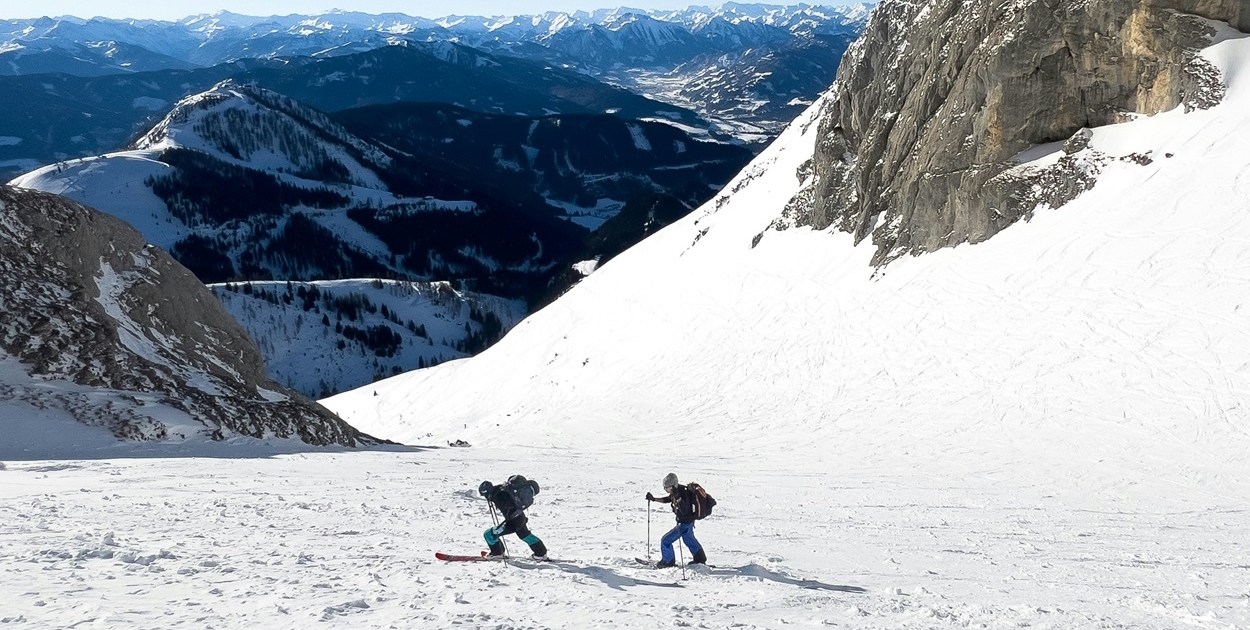
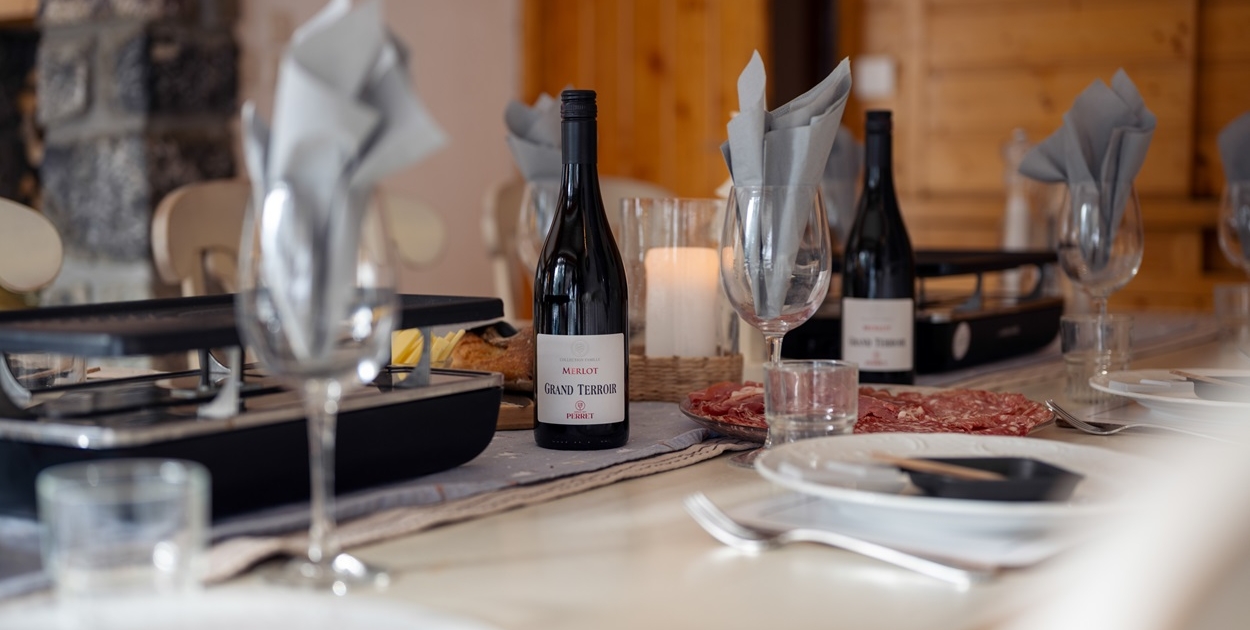
 Ranch Nordique Meribel
Ranch Nordique Meribel
Leave a Reply
Want to join the discussion?Feel free to contribute!